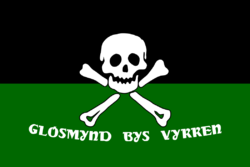National Revolutionary Organisation
This article is incomplete because it is pending further input from participants, or it is a work-in-progress by one author. Please comment on this article's talk page to share your input, comments and questions. Note: To contribute to this article, you may need to seek help from the author(s) of this page. |
The National Revolutionary Organisation(Colgasian:Kowethyans an Domhwelus Kenedhlek) was a Colgasian national liberation movement which was founded and built up by the Colgasian emigrant circles in Atresca in the period between 1859 and 1861. It was active during the late 19th early 20th century. It was organised as a network of regional revolutionary committees and cells which were governed by a Central Committee. The foundation of this organisation was a turning point in the Colgasian struggle for independence as it became the first unified political body of Colgasian nationalists, before it Colgasian separatists were scattered among numerous organisations. The goals of the organisation changed throughout its existance. In the first period its goal was to unify the Colgasian nationalist intellectuals who were scattered across Western Asura, afterwards the organisation became more militant and made inssurectionary cells throughout Colgasia and Camria. Afterwards, when the organisation became the main political body of Colgasian separatists, it officially issued a proclamation, in 1871, that its goal is to create an independent Colgasia which would be a liberal-republic. Following the rebellions they organized and the success of the Colgasian War of Independence, the NRO members organised the government of the first Colgasian Republic. However, due to the outbreak of the Colgasian Civil War the NRO had split between two factions, the minor one being the lefist faction and the other one which was anti-communist. After the civil war ended, the NRO started loosing its membership as many thought that it has fulfilled its mission - an independent Colgasia. However, NRO still continued to operate, now setting its eyes on the territories of surrounding countries which had significant Colgasian minorities and they sought to unify them with their newly founded independent homeland. Special committees were formed, like the Eastern Outerlands Revolutionary Committee, which organised small bands, sometimes entire rebellions. Because of its activity, the international community pressured Colgasia to shut down the NRO. Colgasia was funding and helping these revolutionaries get smuggled across borders up to the point when it almost made an open war with TBD, after the TBD incident in 1922. The Colgasian athorities started arresting and prosecuting members of the NRO which marked the end of this organisation.
